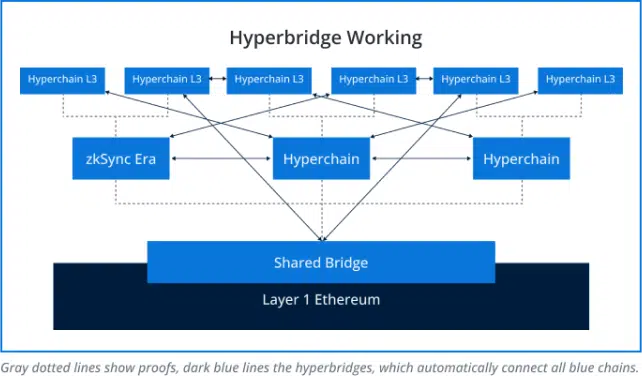Harness the power of autonomy and fluid interconnectivity in your blockchain ventures using zkSync Hyperchains.

Ethereum, despite its status as a leading blockchain platform, is constrained by a mere 12 transactions per second capacity. This limitation leads to network bottlenecks, causing delays and escalating fees, impeding its capacity to handle increasing transaction demands. Furthermore, current bridge solutions designed to link various blockchains have flaws, with numerous protocols experiencing security vulnerabilities.
The zk stack utilizes the core codebase of zkSync Era to present a cutting-edge approach for enhancing scalability. This toolkit enables the development of layer 2 and layer 3 networks within the Ethereum ecosystem.
Hyperchains function as self-governing zk-rollup chains, executing transactions independently from layer-1. These chains produce zk-proofs for transactions and relay them to the mainchain. Rather than resolving individual proofs, hyperchains can consolidate them to optimize the settlement procedure into a unified proof on layer-1. Proof aggregation methods encompass basic proof consolidation, L3 proof resolution, and tiered aggregation.
Hyperchains enable smooth and trustless interaction between each other, fostering an interconnected environment within zkSync. They tackle the issues of liquidity and asset transfer between L2 rollups and layer-1 blockchain. Due to their shared state and unified bridge smart contract on the mainchain, hyperchains allow for swift and reliable asset movement across various domains.

Bloom Genesis helps businesses effectively use the power of OP Stack to develop customizable L2 chains precisely according to the needs and requirements starting from consultation, development, & deployment to post-sales support.